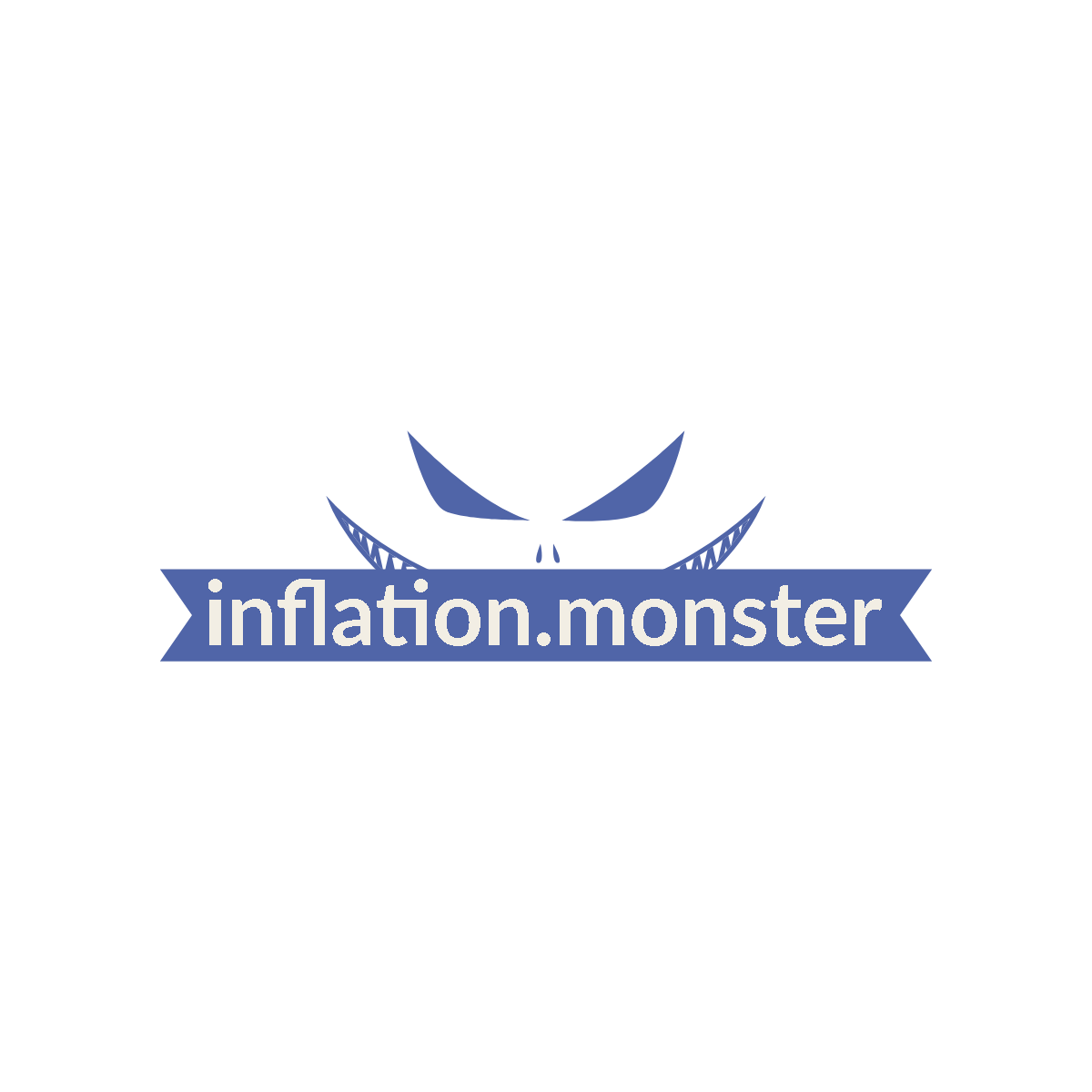Inflation and the Consumer Price Index (CPI) are topics that often leave people scratching their heads, unable to fully comprehend their significance. But fear not, because Inflation.Monster is here to guide you through the maze of economic jargon and unravel the mysteries of these complex concepts. With our insightful analysis, we aim to equip you with the knowledge necessary to navigate the ever-changing financial landscape. So join us as we dive into the depths of hard money, inflation, and the formidable monster that is inflation.

What is Inflation?
Definition of inflation
Inflation refers to the sustained increase in the general price level of goods and services over a period of time. It indicates a decline in the purchasing power of a currency, as more units of currency are required to buy the same goods and services. This increase in prices is typically measured as a percentage change in a price index, such as the Consumer Price Index (CPI).
Causes of inflation
There are various factors that can contribute to inflation. One common cause is the increase in the money supply by central banks. When there is excess money in the economy, demand for goods and services may exceed supply, leading to higher prices. Other factors include cost-push inflation, which occurs when the cost of production increases due to factors like rising wages or raw material prices, and demand-pull inflation, which is driven by increased consumer demand.
Types of inflation
Inflation can be categorized into several types based on the underlying causes. Demand-pull inflation occurs when demand for goods and services outpaces supply, leading to an increase in prices. Cost-push inflation, as mentioned earlier, is caused by rising production costs. Hyperinflation is an extreme form of inflation characterized by rapid and out-of-control increases in prices. On the other hand, deflation refers to a sustained decrease in the general price level and is the opposite of inflation.
Understanding Consumer Price Index (CPI)
Definition of CPI
The Consumer Price Index (CPI) is a measure of the average price change over time for a basket of goods and services commonly purchased by households. It provides a way to track inflation and enables comparisons of price levels between different periods. CPI is widely used by economists, policymakers, and businesses to understand and analyze changes in prices and the impact on the cost of living.
How CPI is calculated
CPI is calculated by collecting price data for a representative basket of goods and services and comparing it to a base period. The basket includes items like food, housing, transportation, healthcare, and education. The price changes of these items are weighted based on their importance in the average consumer’s expenditure. The percentage change in the weighted average of prices from the base period to the current period represents the inflation rate measured by CPI.
Significance of CPI in measuring inflation
CPI is a crucial indicator for measuring inflation as it reflects changes in the cost of living for consumers. It helps policymakers formulate monetary and fiscal policies, such as adjusting interest rates and crafting social security benefits. CPI also serves as a benchmark for wage negotiations, enabling workers to fight for fair compensation that keeps pace with inflation. Additionally, businesses use CPI to make pricing decisions and evaluate the performance of their products and services in relation to competitors.
Relationship Between Inflation and CPI
How CPI reflects changes in inflation
CPI serves as a reliable measure of changes in inflation as it tracks the price fluctuations of a basket of goods and services. By comparing the CPI values of different periods, one can determine the percentage change in prices and effectively gauge the rate of inflation. If the CPI value increases, it indicates inflation, while a decrease suggests deflation. The CPI provides a valuable tool for monitoring the impact of price changes on consumers’ purchasing power.
Factors affecting the relationship between inflation and CPI
Although CPI is widely used as an indicator of inflation, there are certain factors that can affect the relationship between the two. One factor is the composition of the CPI basket. If the basket does not accurately reflect the consumption patterns of the average consumer, CPI may not fully capture the impact of price changes on inflation. Additionally, the weightage assigned to different components of CPI can influence its correlation with overall inflation. Changes in consumption patterns or the inclusion of new products and services may require adjustments to the CPI methodology.
Analyzing CPI Components
Main components of CPI
The Consumer Price Index consists of various components that represent different categories of goods and services. These components typically include food and beverages, housing, transportation, medical care, education, and recreation. Each component contributes to the overall CPI calculation based on its weightage, reflecting its relative importance in the average consumer’s expenditure.
Weightage of components in CPI
The weightage assigned to each component in CPI is determined through extensive surveys to assess consumer spending patterns. For example, if housing expenses constitute a significant portion of the average consumer’s budget, the housing component will carry a higher weightage in the CPI calculation. This approach ensures that the CPI accurately reflects the changing consumption patterns of households over time.
Impact of individual components on CPI
Changes in the individual components of CPI can have varying impacts on the overall index. If prices for a specific component rise significantly, it can exert upward pressure on the CPI, leading to higher measured inflation. Conversely, if prices for a component decrease, it can have a dampening effect on the CPI. Understanding the dynamics and trends within each CPI component is crucial for analyzing the drivers of inflation and predicting future price movements.

CPI and the Cost of Living
Link between CPI and the cost of living
CPI is closely linked to the cost of living as it reflects the price changes of goods and services that consumers regularly purchase. When CPI increases, it indicates that the average consumer needs to spend more money to maintain the same standard of living. CPI provides a valuable tool for individuals to assess how price changes can impact their budget, savings, and overall financial well-being. It enables consumers to make informed decisions about their consumption patterns and adjust their spending habits accordingly.
How CPI affects consumers’ purchasing power
Changes in CPI directly affect consumers’ purchasing power. If CPI is increasing at a faster rate than wages, consumers will experience a decline in their purchasing power. This means that it becomes more difficult for individuals and households to afford the same goods and services they once could. On the other hand, if CPI is increasing at a slower rate or decreasing, consumers may experience an increase in their purchasing power as prices become more affordable.
CPI and its impact on wage adjustments
CPI plays a crucial role in determining wage adjustments for workers. When CPI increases, it signals a rise in the cost of living, which can lead to demands for higher wages. Labor unions and workers may negotiate higher wages based on the rate of inflation measured by CPI. By considering CPI, wage adjustments can be made to ensure that workers’ income keeps pace with inflation and maintains their purchasing power.
Inflation and CPI Trends
Historical trends of inflation and CPI
Over the years, there have been various trends in inflation and CPI. In some periods, inflation has been relatively stable and low, while in others, it has experienced significant fluctuations. CPI has generally followed the pattern of inflation, reflecting the changes in prices and serving as a reliable measure of inflation. Historical data on inflation and CPI trends provide valuable insights into the economic conditions, monetary policies, and consumer behavior during different periods.
Factors influencing inflation and CPI trends
Several factors can influence inflation and CPI trends. Macroeconomic conditions, such as changes in aggregate demand or supply shocks, can have a significant impact on price levels and inflation rates. Monetary policy decisions by central banks, such as interest rate adjustments, can also affect inflation and CPI trends. Additionally, geopolitical events, fiscal policies, and changes in government regulations can all contribute to changes in inflation and CPI trends.
Understanding the relationship between inflation and CPI trends
The relationship between inflation and CPI trends is complex and multifaceted. While CPI is used as a measure of inflation, it is important to recognize that other factors, such as changes in productivity or shifts in consumption patterns, can also influence price levels. Analyzing inflation and CPI trends requires a comprehensive understanding of the underlying economic dynamics, and it is crucial to consider multiple indicators and data points to obtain a holistic view of the inflationary environment.

Measuring Inflation with CPI
CPI as an indicator for monetary policy
CPI plays a crucial role in formulating monetary policy, especially for central banks. Central banks use information from CPI to assess the rate of inflation and its potential impact on the economy. By monitoring CPI, central banks can make informed decisions regarding interest rates, money supply, and other monetary policy tools to manage inflation and maintain price stability.
Importance of accurate inflation measurement
Accurate measurement of inflation is essential for policymakers, businesses, and individuals to make informed decisions. CPI serves as a widely accepted measure of inflation, and its accuracy is crucial for understanding changes in the cost of living and formulating appropriate responses to inflationary pressures. Accurate inflation measurement helps in preventing policy mistakes and ensuring that economic policies are aligned with the prevailing inflationary environment.
Limitations of using CPI as a measure of inflation
While CPI is a valuable indicator for measuring inflation, it does have certain limitations. One limitation is the selection and weighting of the components within the CPI basket. The CPI may not always fully capture price changes for certain goods and services, leading to potential biases in measuring overall inflation. Additionally, changes in quality or consumer preferences may not be fully reflected in CPI, affecting its accuracy in capturing changes in purchasing power.
Inflation and CPI in the Global Economy
Comparison of inflation rates and CPI across countries
Inflation rates and CPI can vary significantly across countries due to differences in economic conditions, monetary policies, and external factors. Comparing inflation rates and CPI across countries provides insights into the relative price levels, cost of living, and economic performance of different nations. It enables policymakers and economists to identify trends, make international comparisons, and devise strategies to address inflationary challenges.
Impact of global inflation on CPI
Global inflation can have a substantial impact on domestic CPI. Changes in prices of imported goods, raw materials, and energy can influence overall inflation and subsequently impact CPI. Exchange rate fluctuations and changes in global supply chains also play a role in transmitting global inflationary pressures to domestic consumer prices measured by CPI. Understanding the interplay between global inflation and domestic CPI is crucial for assessing the impact on local economies and formulating appropriate policy responses.
Role of CPI in international trade and investment
CPI plays an important role in international trade and investment decisions. It helps businesses and investors compare the price levels and cost of living across different countries, influencing their decision-making process. CPI also provides useful information for policymakers when negotiating trade agreements, setting tariff levels, and evaluating the competitiveness of domestic industries. By incorporating CPI data, stakeholders can make informed choices about export markets, foreign investments, and economic relationships with other nations.
Forecasting Inflation Using CPI
Using CPI data for inflation predictions
CPI data can be instrumental in forecasting future inflation rates. By analyzing historical CPI trends, economists and analysts can identify patterns and make predictions about future price movements. CPI data helps in understanding how different components of inflation, such as energy prices or housing costs, may contribute to overall inflation rates. Various statistical models, econometric techniques, and data analysis methods are employed to forecast inflation using CPI.
Methods and models for forecasting inflation with CPI
There are several methods and models for forecasting inflation using CPI data. One common approach is time series analysis that uses historical CPI data to identify trends and patterns. Econometric models, such as autoregressive integrated moving average models, are widely used to capture the dynamics of inflation and its relationship with CPI. Additionally, macroeconomic indicators, such as GDP growth, unemployment rates, or interest rates, are incorporated into forecasting models to provide a comprehensive view of inflationary pressures.
Accuracy and challenges of CPI-based inflation forecasting
Forecasting inflation using CPI data is challenging due to the complexity of economic factors influencing price movements. The accuracy of CPI-based inflation forecasts depends on the quality of data, the robustness of the forecasting models, and the ability to capture unforeseen events or shocks. Changes in consumption patterns, technological advancements, and structural shifts in the economy can pose challenges in accurately predicting future inflation. Regular evaluation and refinement of forecasting models are necessary to improve the accuracy of CPI-based inflation forecasts.
Implications of Inflation and CPI
Effects of high inflation on the economy
High inflation can have significant implications for the economy. It erodes the value of money, reduces purchasing power, and can lead to a decline in real wages. High inflation can also disrupt business operations, increase production costs, and impact profitability. If left unchecked, it can create uncertainty, lower investor confidence, and hinder long-term economic growth. Controlling inflation and maintaining price stability are crucial for promoting a healthy, sustainable economy.
Consumer behavior during inflationary periods
Consumer behavior can change during inflationary periods as individuals and households adjust their spending patterns to cope with rising prices. During periods of high inflation, consumers may engage in panic buying, hoarding essential goods, or making long-term purchases before prices increase further. There may also be a shift from discretionary spending to essential items, and consumers may seek alternative products or brands that offer better value for money. Understanding consumer behavior during inflationary periods is essential for businesses to adapt their strategies and meet changing consumer needs.
CPI’s role in government policies and decision-making
CPI plays a crucial role in informing government policies and decision-making processes. Governments use CPI data to formulate monetary policies, fiscal policies, and social security programs. It helps policymakers assess the impact of price changes on consumers, determine appropriate wage adjustments, and evaluate the effectiveness of economic measures. CPI serves as a valuable tool for monitoring and addressing inflationary pressures, ensuring stability, and promoting the overall well-being of the economy and its citizens.
In conclusion, inflation and CPI analysis provide valuable insights into the impact of price changes on the economy and consumers. Understanding the dynamics between inflation and CPI is essential for policymakers, businesses, and individuals to navigate the financial landscape effectively. By utilizing comprehensive data and forecasting models, stakeholders can make informed decisions, adapt to inflationary challenges, and strive for sustainable economic growth.




